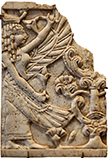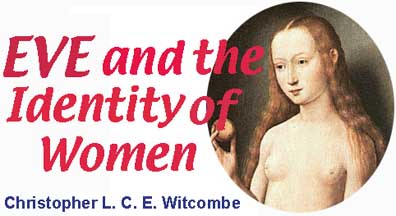|
||||
|---|---|---|---|---|

Winged Female with Tree of Life
|
Cherubim
According to Genesis 3:24, God "placed at the east of the garden of Eden Cherubims, and a flaming sword which turned every way, to keep the way of the tree of life." The "s" added to Cherubim in the King James version is redundant as the name "Cherubim" is plural for Cherub, a term derived from the Hebrew noun K'rubh.
Within the hierarchy of angels, the Cherubim ranked in the highest group which included the seven archangels, the seraphim (angels with two or three pairs of wings which served as the guardians of God's throne or chariot), and the ofannim ("wheels" in Hebrew).
Cherubim, incidentally, were not exclusively male but may in fact originally have been female and associated, as Raphael Patai has suggested [see BIBLIOGRAPHY], with the Canaanite goddess Asherah (see Old Testament, Women & Evil for Asherah).
Early representations of Cherubim, both male and female, show them either singly or together functioning as guardians, and there are several instances where they appear to be protecting a sacred tree. For example, an ivory plaque dating to the 9th century BCE. now in the Louvre shows a single winged female cherub standing protectively next to a tree (usually identified as the Tree of Life).

Winged Female with Tree of Life
This type of winged figure can also be seen in Egypt where wings are the attribute of a number of deities. They appear most frequently, however, on goddesses, usually in a protective context, such as Isis and Nephthys, and Selket and Neith. These four goddesses are shown, for example, positioned at the corners of royal sarcophagi in the Eighteenth Dynasty with their winged arms outstretched along each side to protect the body of the king. It would appear that by the time the story of Genesis was written down around 1000 BCE, the Cherubim had been absorbed into the cult of Yahweh and symbolized his male and female aspects. Later, though, (by the 3rd century BCE) only the male Cherubim were associated with Yahweh; the female Cherubim were re-conceived as personifications of the Community of Israel.
An earlier version of this essay appeared originally in Images of Women in Ancient Art
Copyright © (text only) 2000. Christopher L.C.E. Witcombe
|
|||

